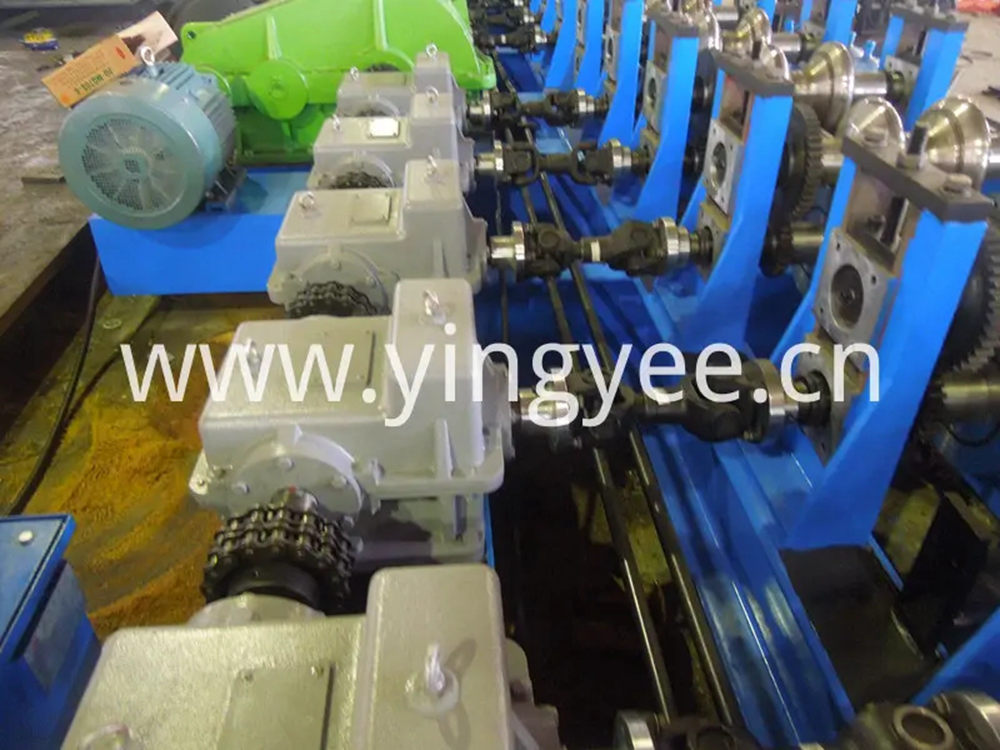
Color Steel Sheet Shutter Door Forming Machine
In today's rapidly advancing industrial landscape, the demand for efficient and durable building materials is at an all-time high. Among these materials, color steel sheets have gained significant prominence due to their versatility, strength, and aesthetic appeal. One of the most innovative applications of color steel sheets is in the manufacturing of shutter doors, which are widely used for commercial and industrial purposes. This is where the color steel sheet shutter door forming machine comes into play.
Overview of Color Steel Sheet Shutter Doors
Color steel sheets are typically made from a base steel substrate that is treated and coated with a layer of paint (usually polyester or galvanized) to enhance their corrosion resistance and visual appeal. These sheets are available in a variety of colors, making them an attractive option for businesses looking to improve the appearance of their facilities while ensuring security and functionality.
Shutter doors made from color steel sheets are known for their strength and durability. They are resistant to harsh weather conditions, rust, and wear, making them ideal for locations that experience significant traffic or potential vandalism, such as storefronts, warehouses, and garages.
Functionality of Shutter Door Forming Machines
The primary purpose of a color steel sheet shutter door forming machine is to convert color steel sheets into functional shutter doors through a series of processes. These machines are engineered to carry out various tasks, including cutting, bending, and rolling steel sheets to form shutter doors of desired shapes and sizes.
A typical forming machine consists of several components, including
1. Coil Feeding System This system ensures a smooth supply of color steel sheets to the forming station. The sheets are unwound from coils, allowing for continuous production.
2. Roll Forming Station At this stage, the color steel sheet is guided through a series of rollers, which shape and profile the sheet into a shutter door configuration. The rollers are designed to create specific curves and folds necessary for the door's structure.
3. Cutting Mechanism Once the shutter door profile has been formed, the sheet is cut to the desired length using a hydraulic or mechanical cutting system. This ensures that the final product meets the exact specifications requested by the customer.

4. Punching Station Some machines are equipped with punching stations, allowing for the creation of holes or apertures in the shutter doors for hinges, locks, or ventilation.
5. Control System Modern forming machines feature advanced control systems that allow operators to program the machine for various specifications quickly. This flexibility enhances productivity and reduces waste.
Advantages of Using Forming Machines
Investing in a color steel sheet shutter door forming machine offers numerous advantages for manufacturers.
1. Efficiency Automated processes reduce the time and labor involved in producing shutter doors, allowing for larger production volumes within shorter time frames.
2. Customization The flexibility of forming machines allows manufacturers to create shutter doors to meet specific customer requirements, including dimensions, colors, and designs.
3. Consistency With automated production lines, manufacturers can ensure that each shutter door is produced with a high level of accuracy and consistency, greatly reducing defects.
4. Cost-Effectiveness Over time, the initial investment in forming machines can be offset by lower labor costs, reduced material waste, and enhanced production efficiency.
Conclusion
In conclusion, the color steel sheet shutter door forming machine represents a significant advancement in the manufacturing of shutter doors. With their versatility and capability to produce customized, high-quality products, these machines enable businesses to meet the growing demand for durable and aesthetically pleasing shutter doors. As the industrial sector continues to evolve, investing in such advanced machinery stands as a key element in driving productivity and ensuring long-term success. As a result, manufacturers who embrace this technology position themselves competitively in the market, offering solutions that cater to the needs of clients across various sectors.